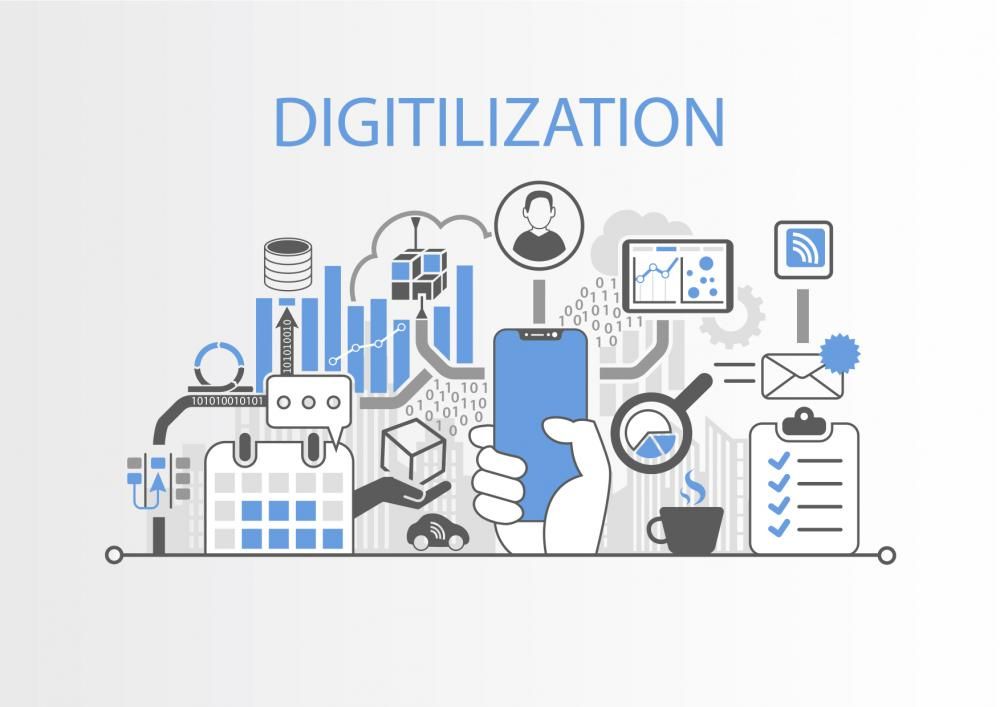What’s the real cost of digital transformation?
More than half of the world’s population is now online, with digitalisation now providing us with some answers on how we can tackle climate change and help to protect the environment. But although we can’t see or smell it, digital pollution is a very real problem.
Shocking fact: If digital pollution was a country, its carbon footprint would be the third largest energy consumer in the world.* And perhaps even more alarming is that, according to The Shift Project, over the course of a year 2% of greenhouse gas is produced by our internet usage, that’s the same amount as global air travel over the same period!
*Cleanfox
Emails and Google
An email’s footprint is caused by the electricity needed to power the equipment used at every stage of the process. Mike Berners-Lee’s brilliant book ‘How Bad Are Bananas?’ explains the impact that emails have and compares our average email traffic to that of driving 10-128 miles in a small petrol car. That’s pretty eye-opening, don’t you think? Here’s a breakdown:
0.03g CO2e = spam email
0.2g CO2e = short email (phone to phone)
17g CO2e = long email, taking 10 minutes to write and 3 minutes to read (laptop to laptop)
26g CO2e = an email, taking 10 minutes to write, sent to 100 people, one of which reads it, the other 99 ignore it.
As you can see, spam emails aren’t the problem, this is because either we deal with them quickly, or are sorted by our filters. The real culprits are the genuine emails that take longer to manage and have the bigger carbon footprints as a result.
The message here is, be more mindful of the emails you send. Do you really need to copy the world and his wife in, or would the one key person do? This is an approach we all need to take.
Google searches, although only account for less than 0.0001% of humanity’s carbon footprint, are another area that we should all know more about. Mike Berners-Lee also breaks these down for us:
0.5g CO2e = one simple search
5.6g CO2e = 5 minutes web browsing from a smartphone
8.2g CO2e = 5 minutes web browsing from a laptop
A straightforward web search on your phone is about 3 seconds worth of a 5-tonne footprint, whereas a 5-minute browse on your laptop is roughly 50 seconds’ worth. This is according to Google’s estimate based on the energy usage from their side.
Agriculture and Industry benefitting
The truth is that digitalisation is also an extremely positive factor in agriculture and industry now too, by helping farmers to work more precisely, sustainably and efficiently. Decision-making and practices are being improved, for example, as a result of the data-driven insights. This is at the same time as improving environmental performance and making the job more appealing to the next generation. With the consumers’ growing need for transparency on how their food is produced, these technologies could also be very valuable.*
*Europa
So, the question we need to ask is…
‘How do we balance the benefits of mitigating climate change with tech, vs tech adding to the problem?’
Well, the digital activity that is using the most energy is music and video streaming. 80% of all data flows through the internet as moving images. These need vast amounts of data, and the higher the resolution, the more data is being sent and received. It’s worth noting that the most efficient form of transmission technology are fibre optic cables, which transmit the signals via light.
Another area that uses a huge amount of power is Cloud computing. This is where instead of keeping your data close by on a computer or smartphone, it is stored on servers which can be anywhere in the world and accessed by you at any time. Two examples of this service are to check your emails via gmail or back up your photos to the cloud.
According to the Bitcoin Energy Consumption Index (2018), Cryptocurrencies like the Bitcoin are adding to the problem too. Approximately 22 megatons of carbon dioxide are produced each year by the entire Bitcoin system, which is the same as the CO2 footprint of cities like Las Vegas, Hamburg or Vienna!
This ultimately all leads us to the biggest problem of energy-guzzling data centres. Absolutely everything we do online travels through these centres and their servers, and when that data is processed, heat is produced as a waste product. Additional energy is then needed for ventilation and to cool the servers down. 25% of the total power consumption of a data centre is caused by mechanical cooling.
There are no official figures for data centres yet, and it’s not properly monitored that the centres report on their outputs, so currently it’s not possible to say how high the current energy requirements are of all data centres worldwide. Regulation is therefore vital to support the climate crisis.
